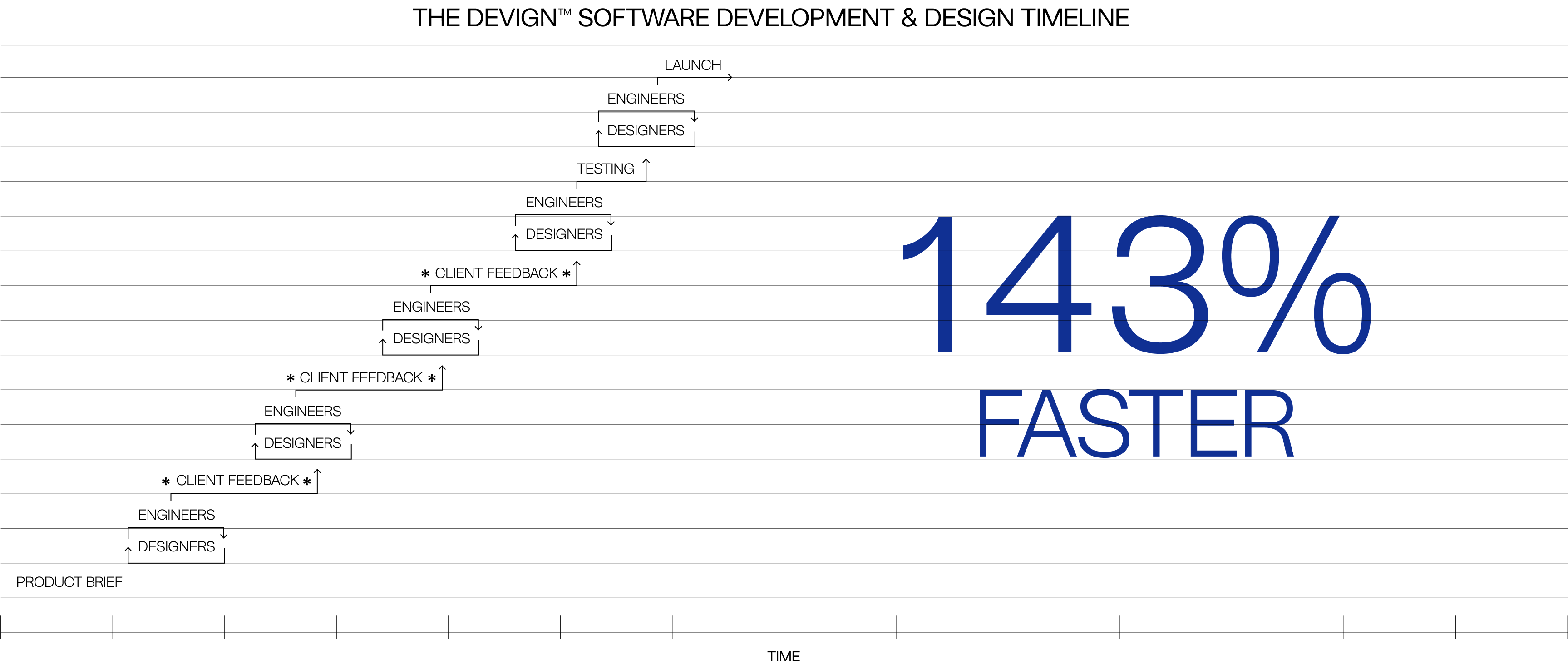About our Devign Methodology
The app and software development industry has grown into something inefficient, and difficult to deal with for customers. Traditionally, it’s divided into front of house (who the client deals with) and back of house (where the design and development takes place). In this model, the FOH staff become barriers between the clients and their project. Traditional BOH is also divided. Design and development working separately, often in different countries, and handing over their progressed files at intervals. This causes hold ups and delays as issues aren’t identified in real time and problems take several cycles to resolve.
We have created a new approach. A smarter, more transparent methodology. All of our design and development occurs in Australia, in-house, in one office. Design and development are not separated. They are fused together in a symbiotic partnership.It is a hybrid environment where day by day, hour by hour, each discipline can see potential problems and potential opportunities appearing in real-time. Clients aren’t kept at arms length, they are brought into the process and get to ‘see where the sausage is made.’ They participate in integrated and collaborative sessions with their team where they learn to understand the technical limitations and opportunities.
It isn’t just a faster way of working, it is a smarter way of working, and it compresses project timelines by 143% or more. We have taken Development + Design out of their siloes and created a new vision of software creation: Devign Methodology.
How this helps us compress project timelines by 143%
Our software solutions reflect the combined experience of all our seasoned developers, product owners, analysts and designers. Our unique collaborative process has proven to work best when every member of the team is constantly connected directly to the challenge, in-house.
Software development is difficult to manage. Preserving the integrity of a project when design and development is split across seperate teams (and locations) is challenging. In the traditional model, client touch points are infrequent and provide late visibility of errors and miscommunications. Design and developer teams are often misaligned, communicate poorly and lack common priorities.
Devign addresses these hurdles with an in-house collaborative project team of Engineers, Designers and Product Owners. Your team is connected directly to the project and frequent client touch points begin at 2 weeks. The Devign Model retains integrity, agility, transparency and quality control.
What the Devign Methodology pushes for
An Outcome
We don’t design and develop for the sake of filling screens or writing code. Every sprint, every feature, and every decision is anchored to an outcome. Whether it’s the Product Outcome or the Sprint Outcome, the question is always the same: “What value does this create?” If the answer isn’t clear, we strip it back.
Less Bloat, More Clarity
Less code means fewer bugs. Fewer features mean simpler decisions. Simpler products mean happier users. The Devign approach pushes for refinement, not expansion - prioritising what truly matters over what simply fills space. Yes, we can build complex systems. Yes, we can modernise legacy products. But the goal isn’t to do more - it’s to do better. Sometimes that means forcing tough prioritisation calls. Sometimes it means saying no. The truth is: the fewer moving parts, the stronger the product.
Underdo the Competition
Instead of competing on size, we compete on focus. By deliberately doing less, we leave room to do the essentials exceptionally well. That’s what makes products stick, what makes users come back, and what makes investments worthwhile.
We didn’t invent the system, we refined it
The Devign Methodology is a blend of many different frameworks, models and ways of working. With years of refinement and trial and error, Moonward has taken the best of all these systems and adapted it to suit us.
Why it works
- Creates clarity and team focus
- Align teams and clients around clear deliverable outcomes
- Increases delivery predictability and quality

